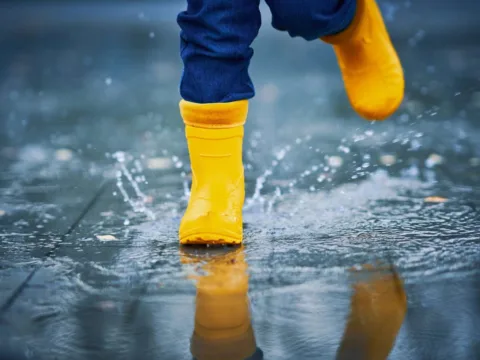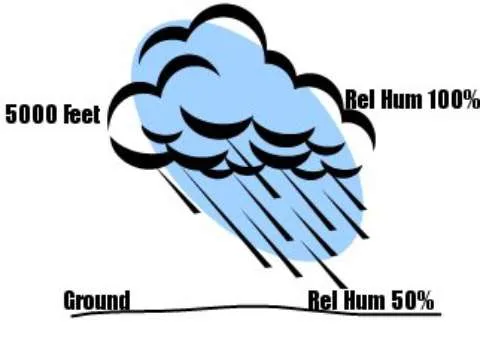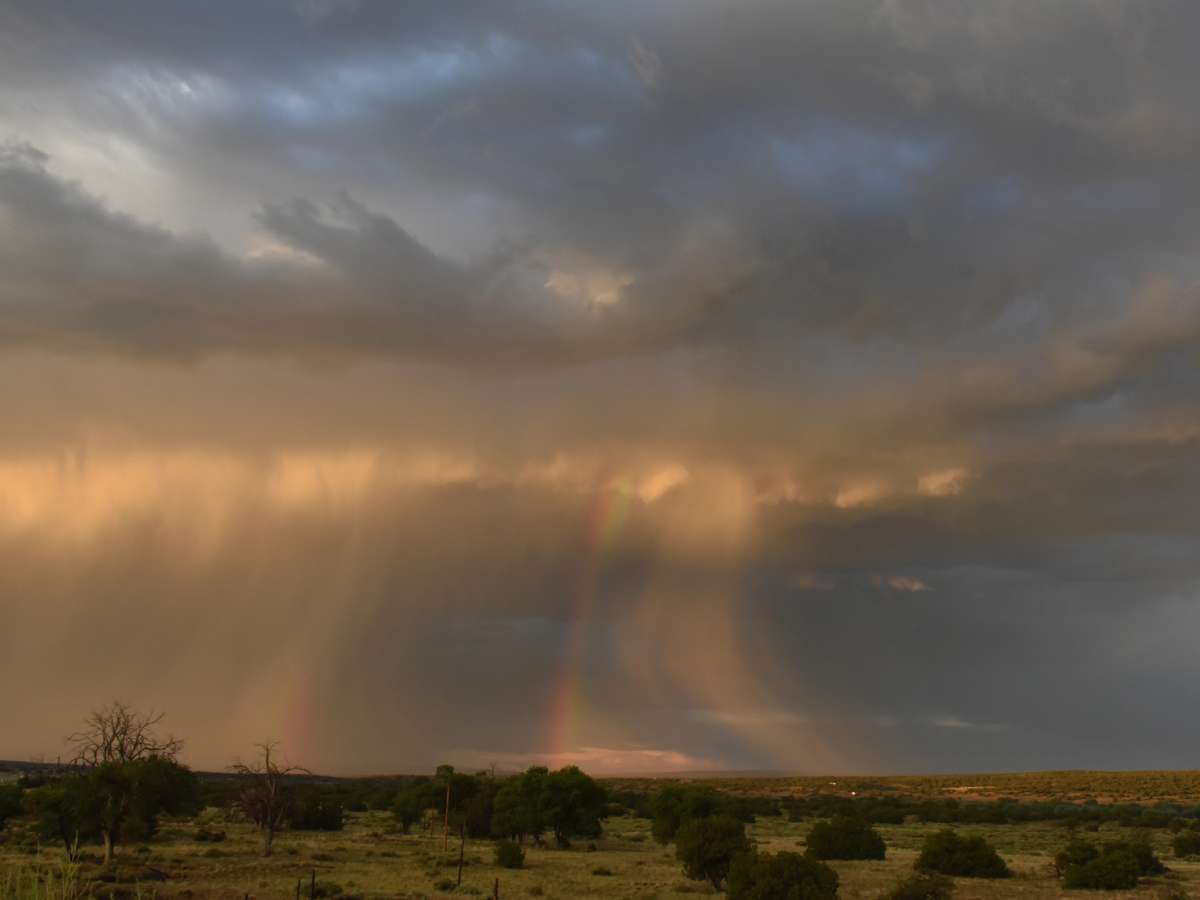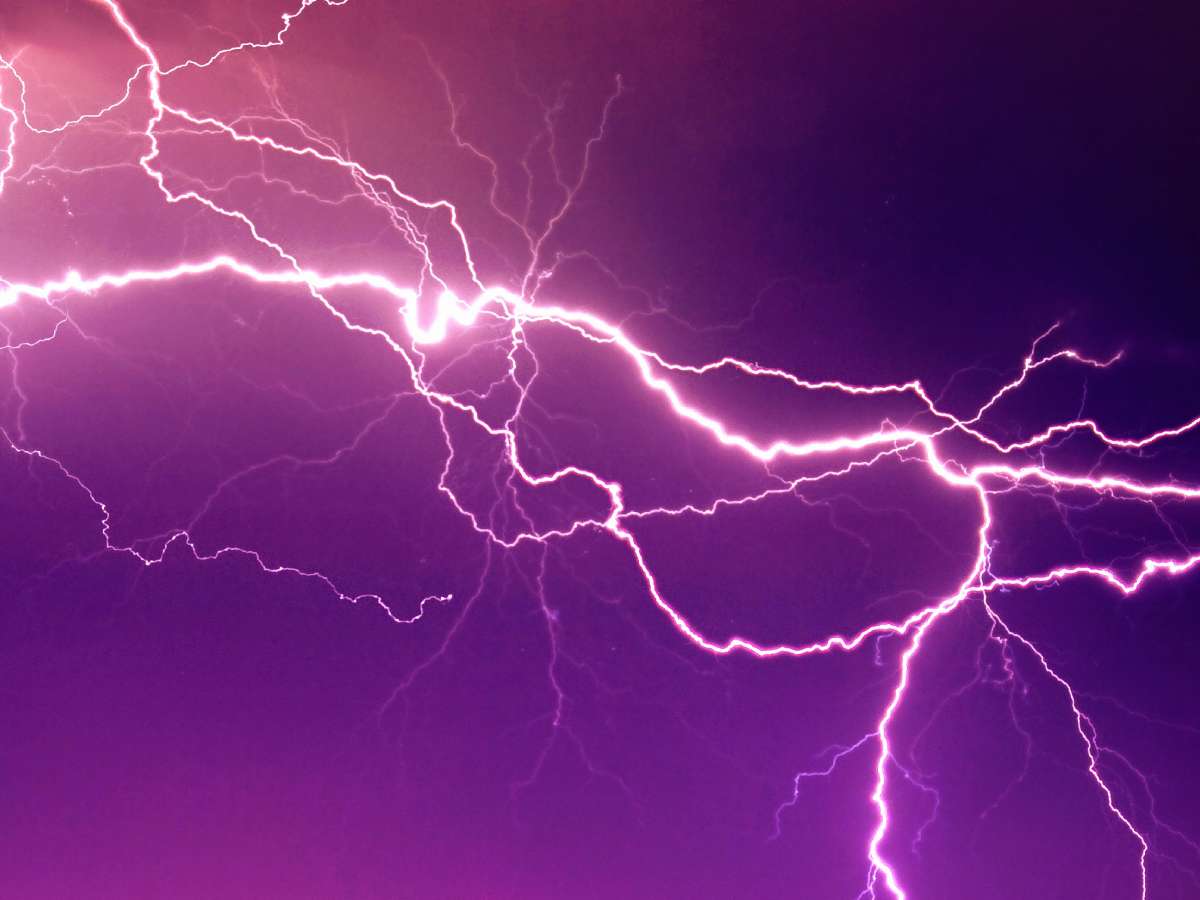
“It’s raining outside, but the weatherman (and my hair) tells me the relative humidity is less than 100%. How does that work?”
That is something I hear a lot! The explanation is quite simple.
When rain begins to fall, it is not at all uncommon for the relative humidity to be well under 100% at the ground – or surface of the atmosphere. The key word here is fall, because the rain is doing just that, falling from higher in the atmosphere where the relative humidity is 100%.
As the rain falls from the cloud, much, but not all, of the rain evaporates before reaching the ground. (Evaporating rainfall is called virga.) Evaporation is a cooling process, so the temperature of the air begins to drop.

You probably have heard the phrase “rain cooled air,” right? That’s the same process which makes you feel cold when you get out of the shower, even though you are in a room that was nice and warm before you got into the shower.
So, the air where the rain is falling begins to cool. As the air cools, it eventually reaches saturation — meaning the humidity has reached 100%. That may take a few minutes, or several hours, depending on how dry the surface air was to begin with, how heavy the rain is, etc.
In a quick thunderstorm, the relative humidity at the ground may never reach 100%. On a day when it begins to drizzle in the morning and that drizzle continues all day, the relative humidity will gradually climb until it reaches 100%. Fog may even begin to form.
I’m a TV weatherman in south Texas. I get blamed for the bad weather, but I also get credit for the beautiful days. I absolutely love my job!



